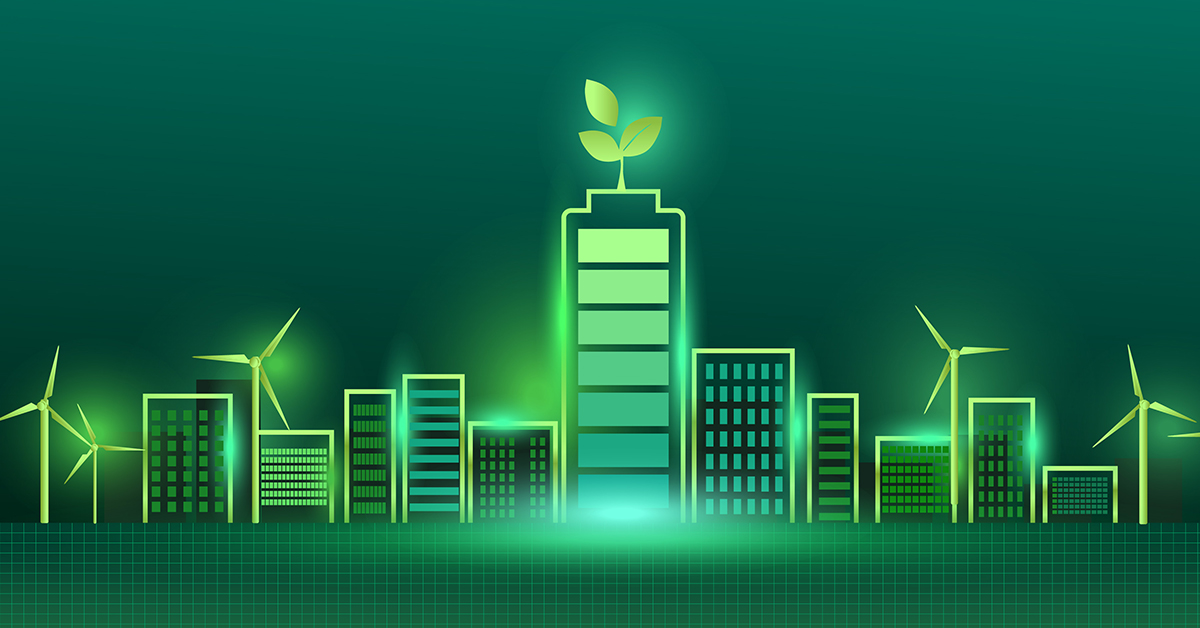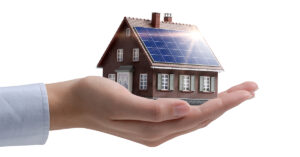Traditional office and retail buildings need to shrink their carbon footprints. According to the World Green Building Council, 39% of global energy-related carbon emissions come from buildings. Of this total, about 28% are operational emissions that are created to heat, cool and power buildings. The remaining 11% is created from the construction process.
As the discussion of climate change becomes increasingly mainstream, a global commitment to reduce carbon emissions is emerging. For example, The United Nations’ Race to Zero campaign, which has the goal of net-zero carbon emissions worldwide by 2050, has thus far created a coalition representing 120 countries along with more than 1,100 cities, 1,100 educational institutions and some 8,200 companies, including nearly 600 financial institutions.
Green leases provide a structure for landlords and tenants to achieve measurable energy-efficiency and environmentally sustainable outcomes that benefit both parties and the environment.
Many landlords, tenants and local governments also are joining the carbon-reduction movement by embracing green leasing. Commercial mortgage brokers should explain to their clients that green leasing is a growing trend that appears to be here to stay. This type of leasing has become an industry tool to facilitate faster adoption of sustainability upgrades.
Such retrofits result in better spaces for tenants and higher asset values for owners. In combination with a growing suite of financing programs and incentives, it has never been easier for real estate owners and developers to increase the sustainability of their properties.
Green-leasing basics
A green lease is a general term used to describe a rental contract between the owner of a commercial property and a tenant, containing clauses and provisions that prioritize environmental preservation, sustainability, energy savings and the reduction of carbon emissions in building operations.
Green leases provide a structure for landlords and tenants to achieve measurable energy- efficiency and environmentally sustainable outcomes that benefit both parties and the environment. These leases often implement requirements for separate utility meters, tenant accountability in their energy use and landlord accountability in the building’s total energy-use performance (including common areas).
Buildings that are recognized as green often see increases in net operating incomes and property values.
There also are performance standards for building systems, as well as procedures for transparency and sharing of energy-use information between tenant and landlord. The goal is to use this information to gather data on energy usage and then implement further energy reductions.
Some green leases may be structured so that all parties work toward bringing the building up to meet the requirements of energy conservation programs, such as the Leadership in Energy and Environmental Design (LEED) or Energy Star programs. The Urban Land Institute and the U.S. Department of Energy published a joint document that details
the value of implementing sustainable property improvements and green leases.
This is not a “one size fits all” type of lease. Clauses included in each green lease depend on many factors, including the use of the property, the age and style of the building, the mix of tenants and the landlord’s motivation for going green. Newer buildings may be built with energy-saving equipment in place, whereas older buildings may require retrofitting.
Carrot and stick
To incentivize landlords and tenants to implement green leases, various local governments and federal agencies are introducing what may be described as a carrot-and-stick legal approach.
Some jurisdictions, including the state of California, are enacting legal mandates enforced through local laws, as well as various ordinances and codes. These require property owners to develop, construct, improve, operate and maintain their properties in an energy-efficient and environmentally sustainable manner.
Another example is
New York City’s Local Law 97, which sets a cap on carbon emissions. It will take effect in 2024 and become stricter in following years. The law applies to most privately owned buildings of at least 25,000 square feet. The goal is to reduce building emissions by 40% in 2030 and by 80% in 2050. Noncompliance may result in fines against the property owner.
Financial incentives
On the support side, federal, state and local governments are offering financial and other benefits such as allowing for buildings with additional floors, expediting permits, and offering tax credits, abatements and rebates to property owners who meet environmental requirements.
Buildings that are recognized as green often see increases in net operating incomes and property values. Some mortgage lenders offer reduced interest rates and/or reduced points to an owner to implement green strategies.
There are government-approved lending programs that can cut the costs of installing energy-efficient equipment or materials. These include Property Assessed Clean Energy (PACE) programs and U.S. Small Business Administration green loans.
Depending on state legislation, PACE financing may be used finance energy-efficiency improvements. In some states, commercial PACE financing may fund a portion of a new construction project or finance leases and power purchase agreements.
Additionally, some federal, state and local governments are adopting legislation to provide additional tax benefits associated with green strategies. A local consultant may help an owner understand the types of financial incentives and tax benefits available in their municipality and state.
And, of course, there is the savings from reducing energy usage. According to a 2020 study co-authored by the Urban Land Institute and the Rocky Mountain Institute, a property owner who has implemented a green lease can recoup the cost of energy-efficiency improvements
by increasing the net operating income up to 5.6%. The property value may increase by $5 to $11 per square foot, and the building may generate a higher internal rate of return of up to 1% over a five-year period.
Solutions to challenges
There are challenges with green leasing, however. A main obstacle is that the landlords and the tenants are often perceived to be on opposite sides of the issue. Landlords generally want to maximize recouping as much of their green-improvement costs from tenants as possible. On the other hand, tenants want to ensure the costs passed to them through a green lease are as low as possible.
There also is the perception that green buildings require increased costs. For property owners, especially those with older buildings, the upfront costs for retrofitting systems to meet green standards tend to be expensive.
Costs for such work vary greatly, depending on the project and location. Past studies have found that the price to reach LEED status, the best-known energy-efficiency certification, depends on which of the four levels of LEED you seek. The higher the level, the more expensive the process becomes.
Lease alternative
Normally, traditional commercial leases allocate energy and operating expenses (including utilities) between landlords and tenants through a net, gross or modified lease structure. These agreements historically have not incentivized energy-use reduction nor the investment of funds to improve major building systems to increase energy efficiency.
The split-incentive challenge is illustrated by these traditional commercial lease structures. Basically, landlords don’t want to carry the upfront burden to make these costly improvements. Tenants, meanwhile, don’t want to spend money to improve the landlord’s underperforming property for something that will remain in place after the end of the lease term.
Under these traditional types of leases, tenants often worry that cost-sharing agreements will inordinately increase their expenses, especially in substandard buildings that may be hit with fines due to the building’s noncompliance with city policies. They also may have concerns that operational language will result in a less-than-comfortable space or that the addition of a green lease will delay the lease-up process.
In contrast, green-lease practices are attractive to owners due to lower energy and operating costs, especially if they are able to qualify for financing or tax incentives to implement these changes. They also are good for tenants by reducing their occupancy costs and meeting corporate environmental metrics. Furthermore, implementing green strategies may give the building a market cachet that can translate into higher rents, increased net operating income and greater value.
●●●
Mortgage brokers should explain to their clients the benefits of green leasing, a trend that is growing throughout the U.S. This form of property lease, supported by tenants and owners alike, has become an industry tool to facilitate faster adoption of sustainability upgrades that result in better spaces for the tenants and higher asset values for the owners. ●
-
Suzanne Hollander is an attorney and professor teaching real estate law, property rights and commercial leasing at Florida International University, and previously taught at New York University. She is the broker of Hollander Realty LLC, representing Florida buyers and sellers. Hollander offers real estate education, speaking and consulting services to lenders, owners, buyers and government entities through her company, Professor Real Estate LLC. She authors the blog at professorrealestate.com. Reach Hollander at suzanne@professorrealestate.com or (786) 202-0587
View all posts





